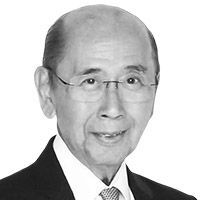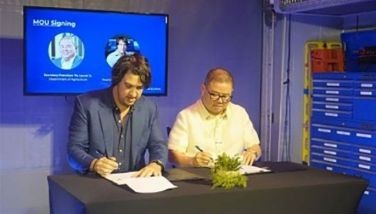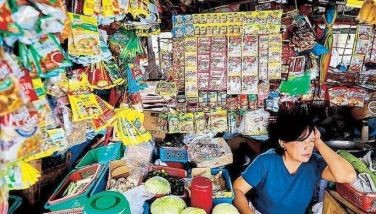St. Augustine gold & copper ltd.

NADECOR (Nationwide Development Corp.) together with St. Augustine announced that a DMPF (Declaration of Mine Project Feasibility) for the Kingking copper gold project in Pantukan, Compostela Valley was submitted to the Department of Environment and Natural Resources. This major milestone is indeed good news despite recent events/controversies in the mining industry.
St. Augustine, listed in Toronto, Canada, is managed by a team with a formidable record, having worked on some of the world’s largest mines. To date, they have invested close to $70 million. Their expertise was the main factor in the successful completion of the DMPF. This company is backed by reputable investors in the industry: Franklin Templeton, Passport, and Wellington. The overall project cost is estimated to be in excess of $1 billion.
The Aquino administration will be pleased to know that St. Augustine’s business practices are a concrete manifestation of responsible mining. They have focused on CSR programs in Pantukan embracing the local community including the indigenous people. St. Augustine is committed to working with the local and national government to address: re-greening initiatives and environmental remediation; homelessness and health care; sustainability programs and projects and the reforestation of Mindanao. It is estimated that more than P5 billion will be spent for community development. Approximately P50 billion will be paid to the government during the first 10 years of production.
It is important to highlight the fact that Kingking is no longer an area of virgin forests and pristine rivers. St. Augustine’s res-ponsible approach as described above is certain to improve the deplorable situation caused by small scale mining of the past.
There are currently 250 workers. During the first three years of operation 4,500 construction workers will be needed. Throughout the lifetime of the mine, 2,000 full time workers will be employed. Typically 2.5 to five indirect jobs are created for every full time mining job. I understand that St. Augustine is actively working with Joel Villanueva, director general of TESDA, to access national training programs in order to prepare employees with the required technical skills.
Industry sources inform that the Philippines is viewed as a high potential for mineral development but is waiting for the development of a significant large operation. Kingking is clearly one of the largest and most promising projects in the country. I am told that it is viewed as an acid test for development of large scale environmentally responsible mining projects in the Philippines. Kingking can bring hope to mining in the country as a “bellwether” of mining development.
St. Augustine’s investment and commitment to Kingking is proof positive of their confidence in the Philippines and the mining industry. This project will be an excellent showcase demonstrating how foreign investment and expertise can work hand in glove with the local community and the national government. It is a win-win scenario for all.
An excellent choice
The appointment of Dr. Arsenio Balisacan as socioeconomic planning secretary and NEDA director general signals the commitment of the Aquino administration to fast track poverty reduction interventions to achieve the Millennium Development Goal (MDG) poverty incidence target of 16.6 percent by 2015. The President should be commended for his choice since Balisacan is a well-respected development economist among multilateral organizations, academics, funding agencies and civil society organizations. His poverty reduction recommendations converge with World Bank and Asian Development Bank plans, hopefully resulting in substantial support for the Philippines.
As a development economist, he is known for his human development poverty studies. In 2008, he started his advocacy for the “pathways out of poverty” or policy levers (given a regime of limited resources) expected to generate high returns in terms of poverty reduction. I am sure his prescriptions then are still relevant today. It was his belief that the likelihood of attaining the MDG poverty target was low.
However, he identifies the policy levers. First, economic growth must be inclusive, i.e. as economic growth increases; poverty incidence decreases, (which incidentally did not happen in the 2000-2006 Arroyo years whose economic growth was significant by country standards). Unfortunately, the weakness of the economy was its inability to create productive employment opportunities for a fast growing labor force, and this must be corrected.
Second, key to inclusive growth is the expanded access to economic opportunities and social services like health and education for the poor. It must ensure that these increased investments are actually availed of by the poor.
Third, poverty has a rural dimension: two of every three poor are in the rural areas, dependent primarily on agricultural incomes. Agricultural investments must be made to increase productivity, including addressing gaps in CARP implementation.
Fourth, population management policy must be in place “enabling families and individuals to decide freely and responsibly the number and spacing of their children and to have the information and means to carry out their decisions.”
Finally, he adds good governance and capacity building for LGUs.
The Zuellig Family Foundation, which I chair, concurs with his beliefs as embodied in our corporate objectives. Since 2009, we have partnered with 30 municipalities; mostly fourth and fifth class municipalities. They started out with a collective maternal mortality ratio (MMR) of 160 in 2008. By 2011, it was reduced to 60, clearly within striking distance of the target of 52 by 2015. MMR is a good barometer of public health. The main drivers in improving the health indicators are the mayors, who together with their municipal health officers reform health systems and increase health investments and services.
Synergeia (a foundation committed to improve the quality of education) has had similar experiences in improving education indicators by involving the mayor and the local school board.
The challenge of Dr. Balisacan is to convince the President and his cabinet colleagues that the “pathways out of poverty” can be the immediate blueprint for poverty reduction. Even if the MDG poverty target is not met by 2015, substantial reductions can still be seen in the next four years.
In addition, he has to convince DILG Secretary Jesse Robredo (and this should not be difficult) to get governors and mayors to localize the “pathways out of poverty” in their agenda. The poor identified in the municipalities by the National Statistical Coordination Board (NSCB) must have expanded access to economic and social services resulting in better human development indicators.
2016 still provides a long runway. The Aquino government has started and will continue to increase pro-poor investments in health education and social services. It is now Dr. Balisacan’s challenge to ensure that these pro-poor investments generate the much-improved human development outcomes. If successful, this will be a lasting legacy of the Aquino administration.
- Latest
- Trending





























